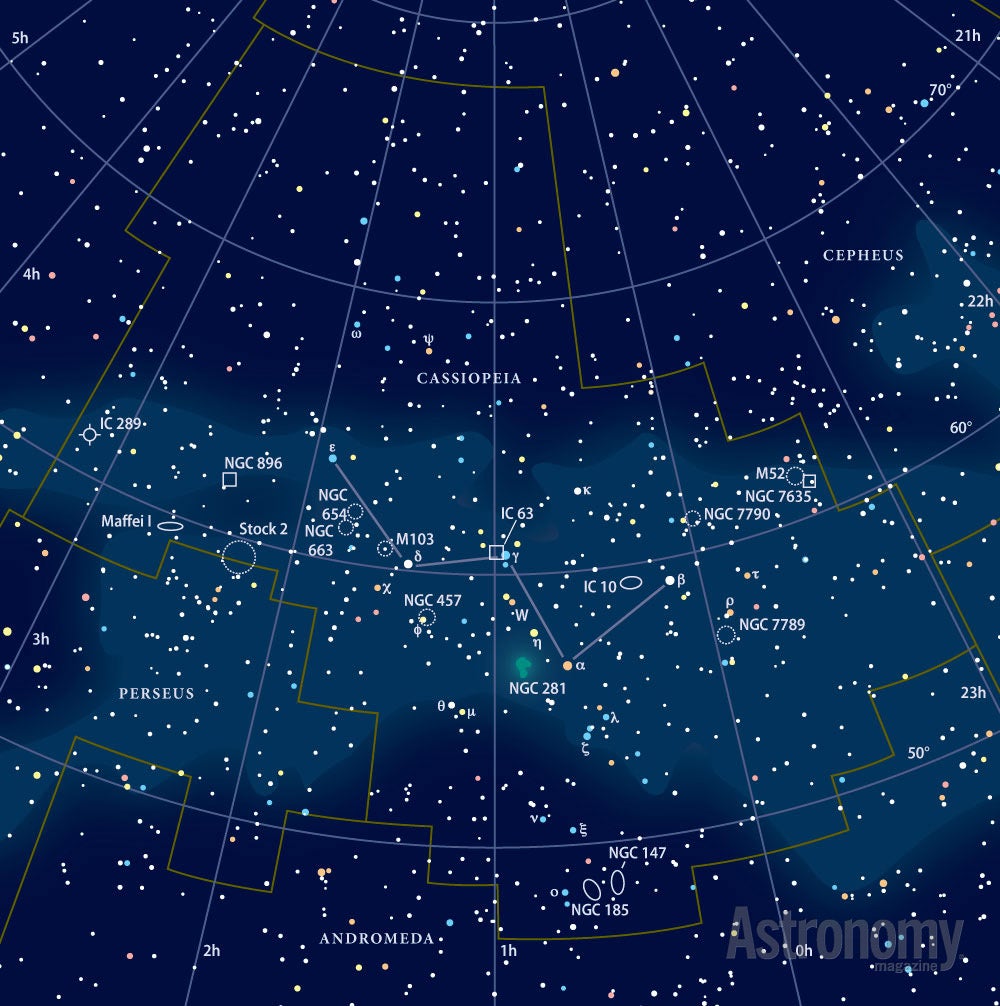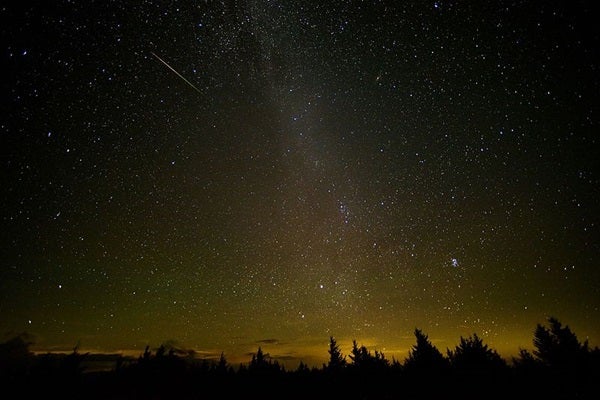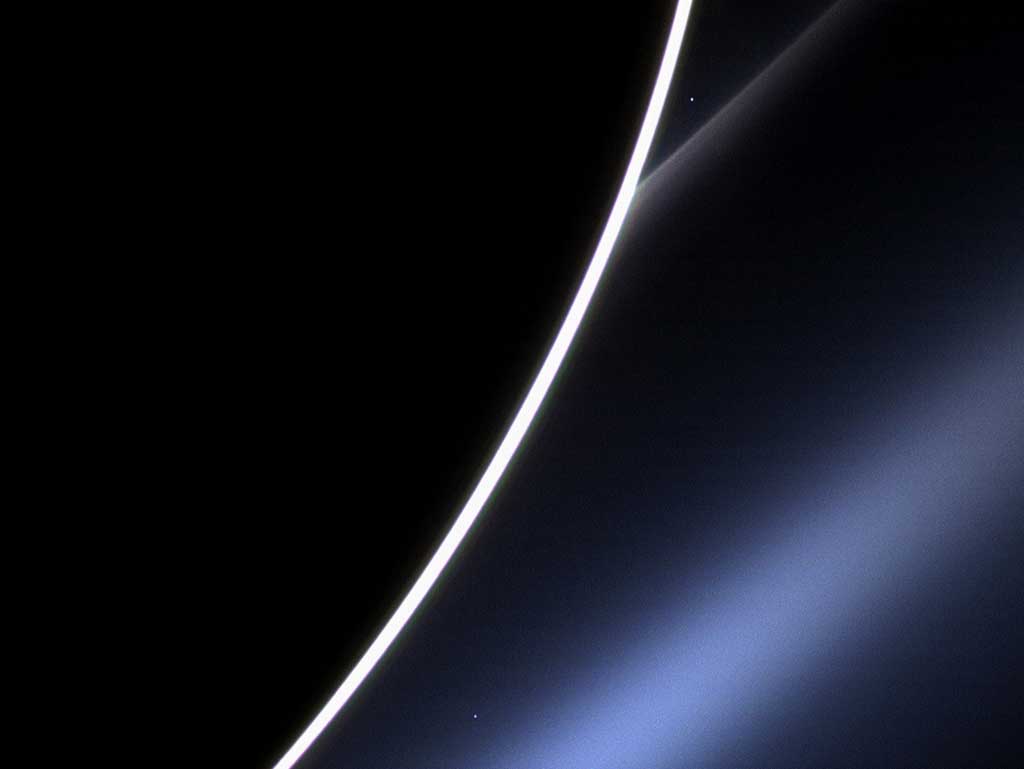Friday, August 25
Following its meeting with the Sun earlier this week, the Moon has now climbed into view in the evening sky. Be sure to catch the 20-percent-lit crescent this evening, when it forms a pretty triangle with magnitude –1.8 Jupiter and 1st-magnitude Spica. All three objects lie in the constellation Virgo and stand well clear of the west-southwestern horizon during evening twilight. And don’t pass up an opportunity to view Jupiter through a telescope. The giant planet’s disk spans 33″ and shows a wealth of atmospheric detail.
Saturday, August 26
Venus appeared among the background stars of Gemini the Twins yesterday morning, but you’ll find it against the backdrop of Cancer the Crab today. This border crossing sets up a pretty conjunction a week from now, when the gleaming planet passes near the Beehive star cluster (M44).
Mercury reaches inferior conjunction, passing between the Sun and Earth, at 5 p.m. EDT. The innermost planet will return to view before dawn in early September.
Sunday, August 27
The constellations Ursa Major the Great Bear and Cassiopeia the Queen lie on opposite sides of the North Celestial Pole, so they appear to pivot around the North Star (Polaris) throughout the course of the night and the year. In late August and early September, these two constellations appear equally high as darkness falls. You can find Ursa Major and its prominent asterism, the Big Dipper, about 30° above the northwestern horizon. Cassiopeia’s familiar W-shape, which currently lies on its side, appears the same height above the northeastern horizon. As the night progresses, Cassiopeia climbs above Polaris while the Big Dipper swings below.
Monday, August 28
Distant Neptune reaches opposition and peak visibility a week from tonight, but the view now is essentially the same. The ice giant planet rises during evening twilight and climbs nearly halfway to the zenith in the southern sky by 1:30 a.m. local daylight time. The magnitude 7.8 planet lies in Aquarius, 1.3° east of 4th-magnitude Lambda (l) Aquarii. You’ll need binoculars to spy Neptune and a telescope to see its blue-gray disk, which spans 2.4″.
Tuesday, August 29
First Quarter Moon arrives at 4:13 a.m. EDT. Our satellite won’t rise until after 2 p.m. local daylight time, however, so observers in the Americas won’t see it precisely half-lit. As darkness falls this evening, the Moon appears 57 percent illuminated and resides among the background stars of Ophiuchus, some 8° to the right of Saturn.
Wednesday, August 30
The waxing gibbous Moon makes an even better guide to Saturn this evening, when our satellite lies some 6° to the upper left of the planet. Shining at magnitude 0.4, Saturn is the brightest object anywhere near the Moon. The two lie highest in the south after sunset and then dip toward the southwestern horizon, setting shortly after midnight. When you view Saturn through a telescope this week, the planet’s disk measures 17″ across while its dramatic ring system spans 39″ and tilts 27° to our line of sight.
The Moon reaches apogee, the farthest point in its orbit around Earth, at 7:25 a.m. EDT. It then lies 251,226 miles (404,308 kilometers) from Earth’s center.
Thursday, August 31
The variable star Algol in Perseus reaches minimum brightness at 4:27 a.m. EDT. If you start watching it on the evening of the 30th (it rises in the northeast late in twilight), you can see its brightness diminish by 70 percent over the course of about five hours as its magnitude drops from 2.1 to 3.4. This eclipsing binary star runs through a cycle from minimum to maximum and back every 2.87 days.
The Aurigid meteor shower peaks tonight, with the best views coming when the radiant (which lies in the constellation Auriga) climbs high before dawn. Although this minor shower typically produces only 6 meteors per hour under optimal conditions, it occasionally performs much better. Rates six times higher than normal occurred in 1935, 1986, and 1994, and viewers recorded up to 130 meteors per hour in 2007. No one knows when the shower will burst out again, but the waxing gibbous Moon sets by 2 a.m. local daylight time, providing three hours of dark skies to check it out.
Friday, September 1
Brilliant Venus makes a tempting target all week, but the best views should come before dawn today and tomorrow. Both mornings find the planet 1° south of the magnificent Beehive star cluster (M44) in Cancer. The two make a lovely binocular sight from the time they rise around 4 a.m. local daylight time until twilight begins to wash out the cluster’s stars an hour later. Of course, twilight has little effect on Venus because it shines so brightly, at magnitude –3.9. A telescope reveals the planet’s 12″-diameter disk, which appears a bit more than 80 percent illuminated.
Saturday, September 2
Most people have never seen an object other than the Moon or rarely a comet shift relative to the background stars in real time. But the first week of September offers observers with telescopes a nice chance to see one of these rapid movers in action. Asteroid 3122 Florence — named after nursing pioneer Florence Nightingale — races past Earth this week, peaking at a rate of 9° per day. That works out to 22″, about two-thirds of Jupiter’s current diameter, every minute. The asteroid glows at 9th magnitude on September’s first three evenings and fades to 10th magnitude the following three nights. You can find it moving from Delphinus tonight into Vulpecula tomorrow and Cygnus on the 4th.
Sunday, September 3
If you look overhead as darkness falls anytime this week, your eyes will fall on the brilliant star Vega in the constellation Lyra the Harp. At magnitude 0.0, Vega is the brightest member of the prominent Summer Triangle asterism. The Triangle’s second-brightest star, magnitude 0.8 Altair in Aquila the Eagle, lies some 35° southeast of Vega. The asterism’s dimmest member, magnitude 1.3 Deneb in Cygnus the Swan, stands about 25° east-northeast of Vega. Deneb trails Vega across the sky by about two hours, and passes through the zenith at approximately 11 p.m. local daylight time.












